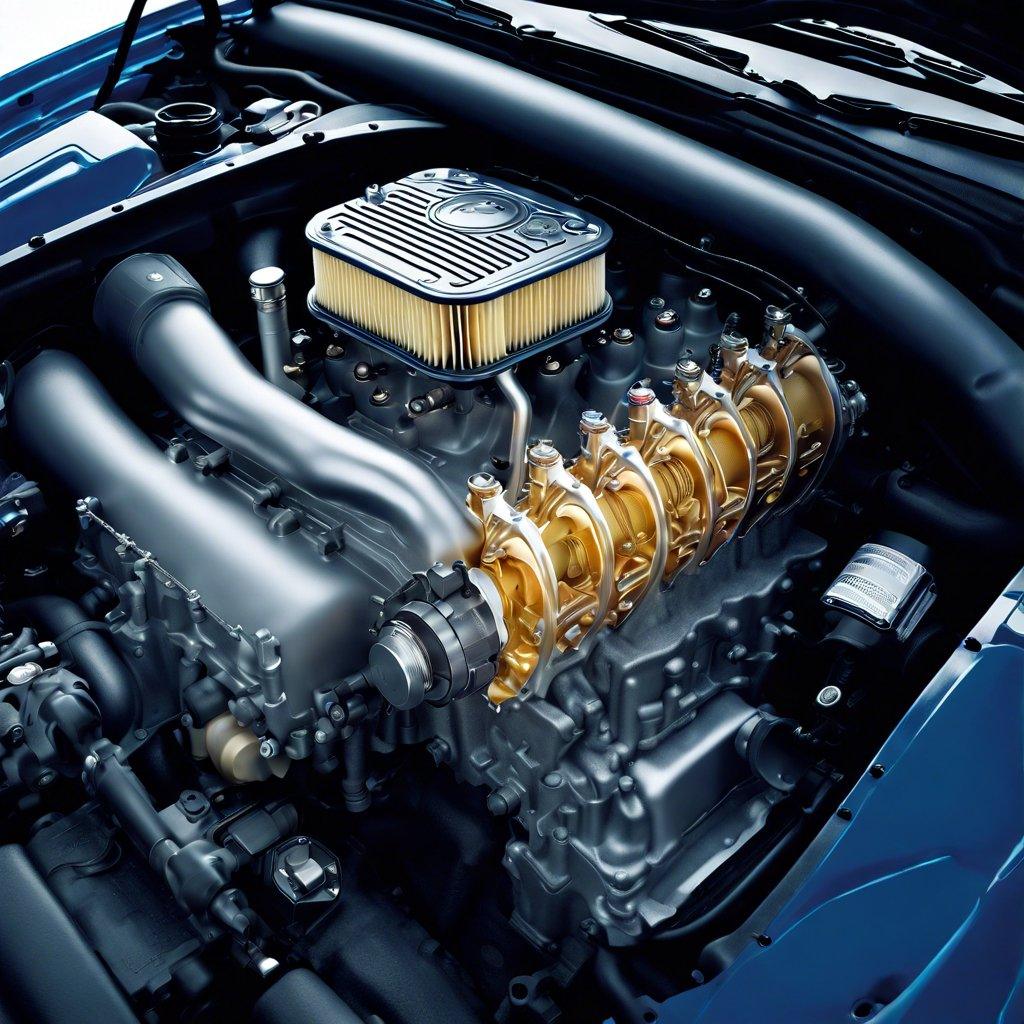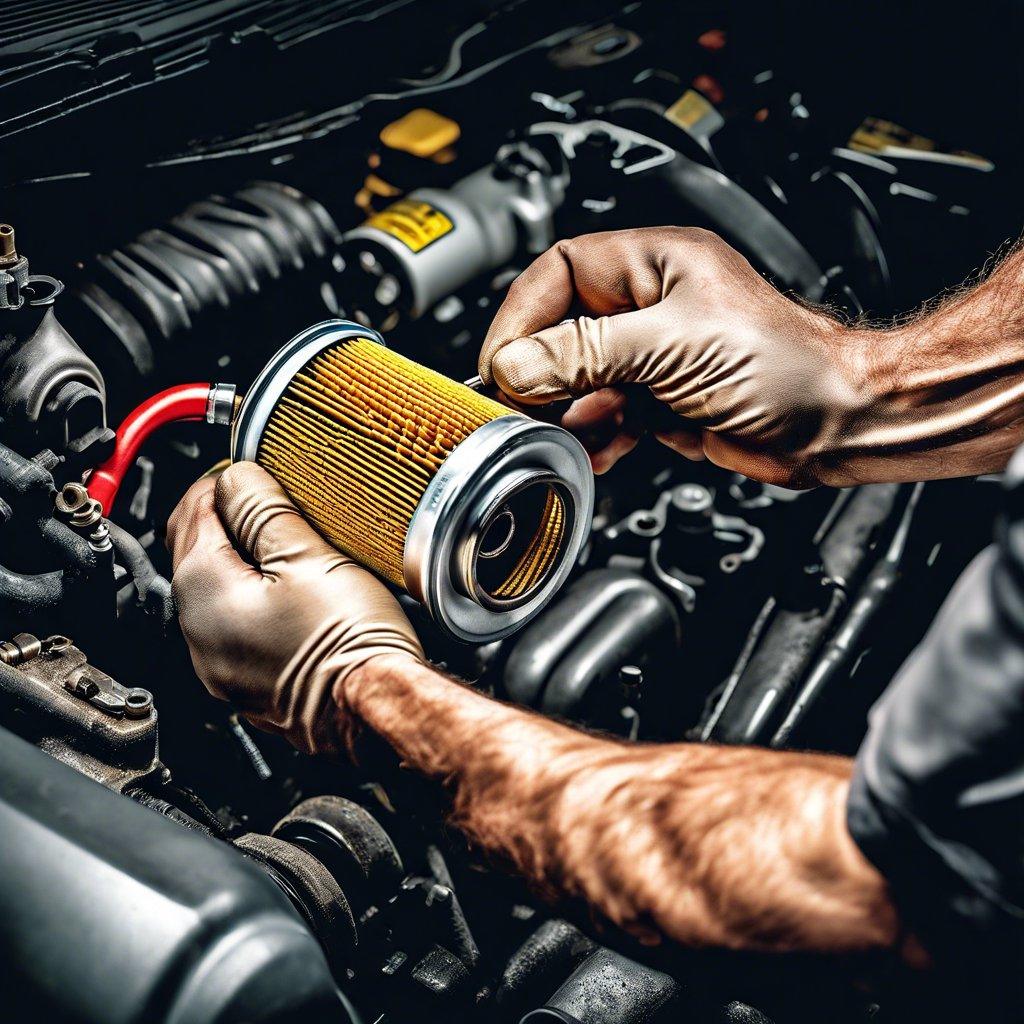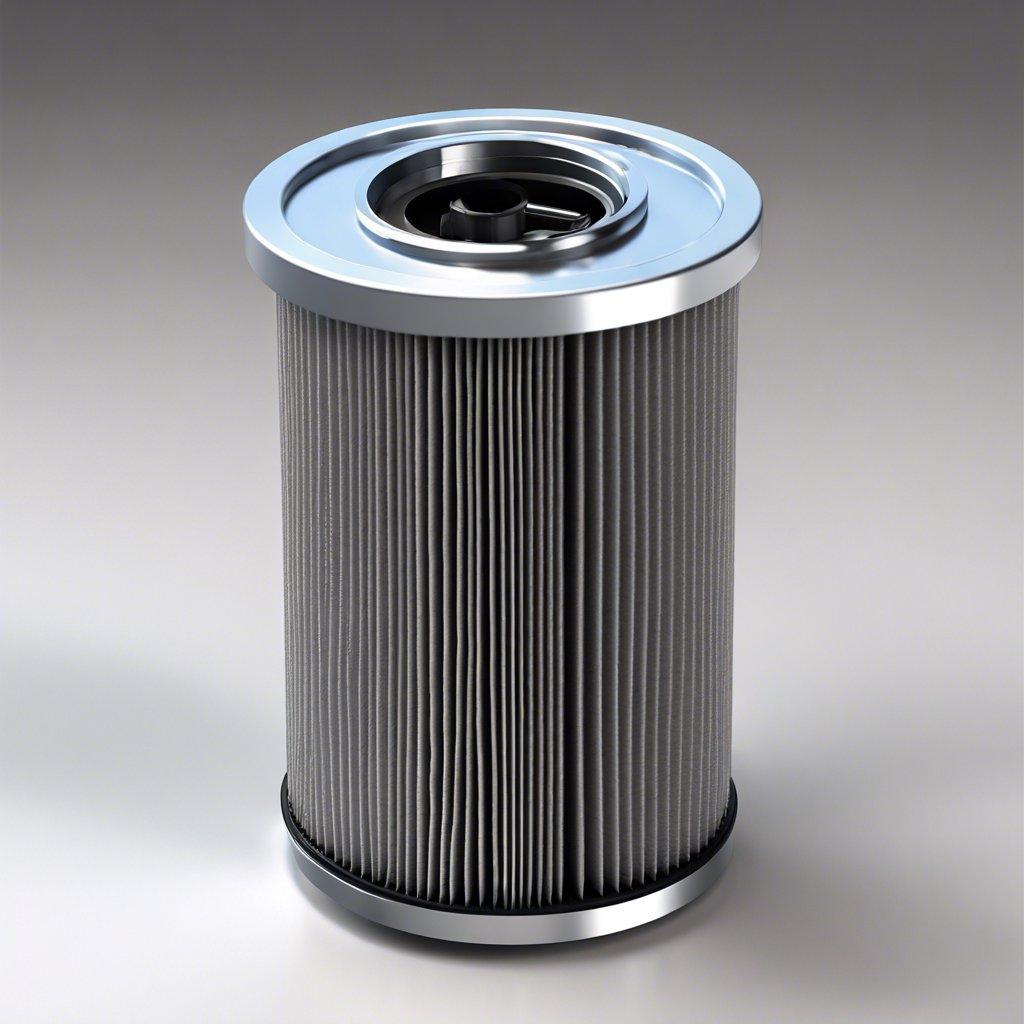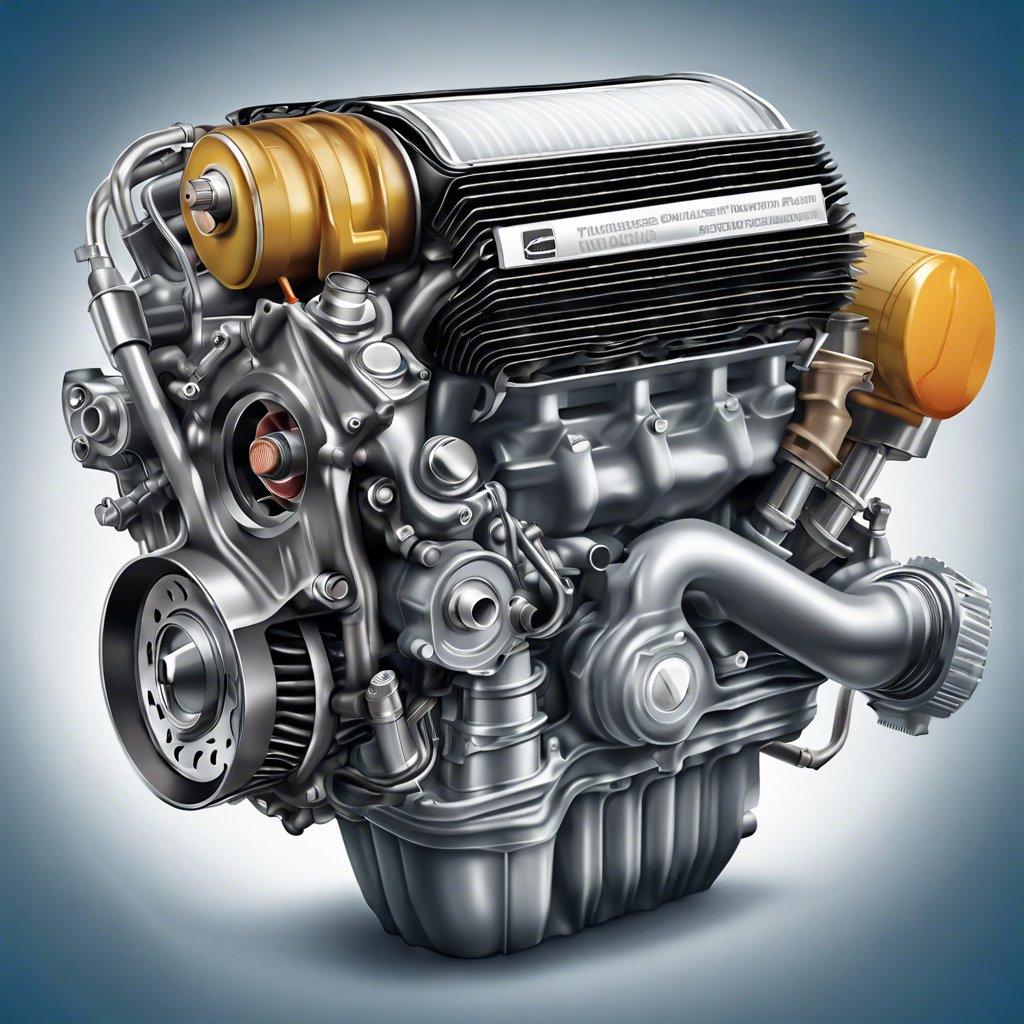Changing the Fuel Filter: A Comprehensive Guide
Mastering the Art of Fuel Filter Replacement: A Seamless Journey

Understanding the Importance of Fuel Filter Replacement
Fuel filters play a crucial role in maintaining the efficiency and longevity of your vehicle’s engine. Over time, these filters can become clogged with debris, impurities, and contaminants, restricting the flow of fuel and leading to decreased performance, reduced fuel economy, and even engine damage. Regularly replacing the fuel filter is essential to ensure your vehicle operates at its best.
Preparing for the Task
Before you begin the fuel filter replacement process, ensure you have the necessary tools and materials on hand. This includes the appropriate replacement fuel filter, a wrench or socket set, a drain pan to catch any fuel spillage, and clean rags or paper towels to wipe down the work area.
Step-by-Step Fuel Filter Replacement
-
Locate the Fuel Filter: Consult your vehicle’s owner’s manual or service documentation to identify the location of the fuel filter. This is typically located along the fuel line, either near the fuel tank or the engine.
-
Disconnect the Fuel Line: Carefully disconnect the fuel line from the filter, ensuring to have a drain pan ready to catch any residual fuel.
-
Remove the Filter: Using the appropriate wrench or socket, loosen and remove the fuel filter from its mounting bracket or housing.
-
Install the New Filter: Thoroughly clean the mounting area and then install the new fuel filter, ensuring it is properly aligned and tightened securely.
-
Reconnect the Fuel Line: Carefully reconnect the fuel line to the new filter, making sure the connection is secure and tight.
-
Bleed the Fuel System: Depending on your vehicle, you may need to bleed the fuel system to remove any air pockets. Consult your owner’s manual for the appropriate procedure.
-
Start and Inspect: Start the engine and check for any fuel leaks around the new filter. If all is well, your fuel filter replacement is complete.
Maintaining Fuel System Efficiency
To ensure your vehicle’s fuel system continues to operate at its best, it’s recommended to replace the fuel filter at the intervals specified in your owner’s manual or service schedule. Regular maintenance and timely fuel filter replacements will help prevent costly engine repairs and maintain optimal vehicle performance.
| Fuel Filter Replacement Interval | Typical Mileage |
|---|---|
| Light-Duty Vehicles | 30,000 – 50,000 miles |
| Heavy-Duty Vehicles | 20,000 – 30,000 miles |
Remember, regular fuel filter maintenance is a simple yet essential step in ensuring the longevity and optimal performance of your vehicle’s engine. By following this comprehensive guide, you can master the art of fuel filter replacement and keep your vehicle running at its best.
Streamlining Fuel Efficiency: Unlocking the Power of Proper Filter Maintenance
Understanding the Importance of Fuel Filter Maintenance
Proper maintenance of the fuel filter is crucial for optimizing engine performance and fuel efficiency. A clogged or malfunctioning fuel filter can lead to a range of issues, including decreased power, reduced fuel economy, and even engine damage. By following a comprehensive guide on changing the fuel filter, engineering and technology employees can ensure their vehicles operate at peak efficiency, reducing operating costs and environmental impact.
Identifying the Need for a Fuel Filter Replacement
There are several signs that indicate the need for a fuel filter replacement, including:
- Reduced Fuel Economy: If you notice a sudden drop in your vehicle’s fuel efficiency, it may be a sign that the fuel filter is clogged and restricting fuel flow.
- Decreased Engine Performance: A clogged fuel filter can cause a loss of power, hesitation, or even stalling, as the engine struggles to receive the necessary fuel.
- Difficulty Starting the Vehicle: A blocked fuel filter can make it challenging to start the engine, as the fuel is unable to reach the combustion chamber effectively.
Step-by-Step Guide to Changing the Fuel Filter
Changing the fuel filter is a straightforward process that can be performed by engineering and technology employees with the proper tools and safety precautions. Follow these steps to ensure a successful fuel filter replacement:
| Step | Description |
|---|---|
| 1. Locate the Fuel Filter | Consult your vehicle’s owner’s manual to identify the location of the fuel filter, which is typically situated along the fuel line. |
| 2. Relieve Fuel System Pressure | Before removing the fuel filter, it is essential to relieve the pressure in the fuel system to prevent fuel leaks and potential hazards. |
| 3. Remove the Old Fuel Filter | Carefully disconnect the fuel lines from the old filter and remove it from its mounting location. |
| 4. Install the New Fuel Filter | Ensure that the new fuel filter is of the correct size and type for your vehicle, and follow the manufacturer’s instructions for proper installation. |
| 5. Reconnect the Fuel Lines | Securely reconnect the fuel lines to the new filter, taking care to avoid any leaks. |
| 6. Start the Engine and Check for Leaks | Start the engine and inspect the fuel filter and fuel lines for any signs of leakage. If no leaks are present, the fuel filter replacement is complete. |
Maintaining Optimal Fuel Efficiency
Regularly changing the fuel filter is essential for maintaining optimal fuel efficiency and engine performance. By following the recommended replacement intervals specified by the vehicle manufacturer, engineering and technology employees can ensure their vehicles operate at peak efficiency, reducing fuel costs and environmental impact.
Remember, proper fuel filter maintenance is a crucial component of a comprehensive vehicle maintenance strategy, contributing to the overall longevity and reliability of your engineering and technology equipment.
Fuel Filter Replacement: The Keystone of Optimal Engine Performance
Understanding the Fuel Filter’s Role
The fuel filter is a vital component in a vehicle’s fuel delivery system, responsible for removing contaminants and impurities from the fuel before it reaches the engine. A properly functioning fuel filter is essential for maintaining optimal engine performance, fuel efficiency, and prolonging the lifespan of critical engine components.
Signs of a Failing Fuel Filter
Recognizing the signs of a failing fuel filter is crucial to prevent more severe engine issues. Common indicators include reduced fuel efficiency, decreased engine power, difficulty starting the engine, and even stalling.
1. Locate the Fuel Filter: Consult your vehicle’s owner’s manual or repair guide to identify the location of the fuel filter, as its placement may vary depending on the make and model.
2. Prepare the Work Area: Ensure the work area is well-ventilated and take necessary safety precautions, such as wearing protective gloves and eye wear, to prevent potential fuel spills or exposure.
3. Disconnect the Fuel Lines: Carefully disconnect the fuel lines from the fuel filter, taking note of their positions for proper reassembly.
4. Remove the Fuel Filter: Unscrew or detach the fuel filter from its mounting, ensuring to catch any residual fuel in an appropriate container.
5. Install the New Fuel Filter: Carefully align and connect the new fuel filter, ensuring a secure fit and proper orientation of the fuel lines.
6. Reconnect the Fuel Lines: Reattach the fuel lines to the new fuel filter, ensuring a tight and secure connection.
7. Purge the Fuel System: Start the engine and allow it to run for a few minutes to purge any air from the fuel system.
8. Inspect for Leaks: Carefully inspect the fuel filter and connections for any signs of leaks, addressing any issues before completing the repair.
Maintenance and Replacement Intervals
It is recommended to replace the fuel filter in accordance with the manufacturer’s recommendations, typically every 30,000 to 50,000 miles or as specified in the vehicle’s maintenance schedule. Regular fuel filter replacement is crucial for maintaining optimal engine performance and fuel efficiency.
The fuel filter is a vital component that plays a crucial role in ensuring the efficient and reliable operation of your vehicle’s engine. By understanding its importance, recognizing the signs of a failing fuel filter, and following proper replacement procedures, you can maintain optimal engine performance and extend the lifespan of your vehicle.
The fuel filter is a critical component in your vehicle’s fuel system, responsible for removing contaminants and ensuring the delivery of clean, high-quality fuel to the engine. Neglecting to replace the fuel filter at the recommended intervals can lead to a host of issues, including reduced fuel efficiency, decreased engine performance, and in severe cases, engine damage.
Preparing for the Fuel Filter Swap
Before beginning the fuel filter replacement process, ensure you have all the necessary tools and materials on hand, including the appropriate replacement fuel filter, a drain pan, and any necessary wrenches or sockets. It’s also important to consult your vehicle’s owner’s manual for specific instructions and safety precautions.
Disconnecting the Fuel System
The first step in the fuel filter swap is to safely disconnect the fuel system. This typically involves locating the fuel filter, which is often situated near the fuel tank or in the engine bay, and depressurizing the fuel line. Take care to avoid any potential fuel leaks or spills during this process.
Removing the Old Fuel Filter
Once the fuel system is depressurized, you can proceed to remove the old fuel filter. This may involve unscrewing the filter housing, disconnecting any hoses or brackets, and carefully extracting the filter. Be mindful of any residual fuel that may spill during this step.
Installing the New Fuel Filter
With the old filter removed, it’s time to install the new one. Carefully align the new filter, ensuring it is seated properly and that any gaskets or O-rings are in good condition. Reconnect any hoses or brackets, and tighten the filter housing securely.
Restoring the Fuel System
After the new fuel filter is in place, it’s important to restore the fuel system. This may involve priming the system, starting the engine, and checking for any leaks or issues. Consult your vehicle’s owner’s manual for specific instructions on this process.
Verifying the Fuel Filter Swap
Once the fuel filter replacement is complete, it’s recommended to take your vehicle for a test drive and monitor the engine’s performance. If you notice any issues, such as decreased power or fuel efficiency, it’s advisable to have the system checked by a professional.
Maintaining Fuel System Health
Regular fuel filter replacement is crucial for maintaining the overall health and longevity of your vehicle’s fuel system. By following the manufacturer’s recommended replacement intervals and staying vigilant for any signs of fuel system issues, you can ensure your engine continues to operate at peak efficiency.
Remember, the fuel filter is a vital component that plays a critical role in preserving the integrity of your vehicle’s fuel system. By understanding the importance of fuel filter replacement and following the proper procedures, you can help ensure your engine maintains optimal performance and longevity.
Key Takeaways:
- The fuel filter is essential for removing contaminants and delivering clean fuel to the engine.
- Neglecting fuel filter replacement can lead to reduced fuel efficiency, decreased engine performance, and potential engine damage.
- Carefully follow the recommended procedures for disconnecting, removing, and installing the new fuel filter.
- Restore the fuel system and verify the filter swap by monitoring the engine’s performance.
- Adhere to the manufacturer’s recommended replacement intervals to maintain fuel system health.
| Step | Description |
|---|---|
| 1 | Understand the importance of fuel filter replacement |
| 2 | Prepare the necessary tools and materials |
| 3 | Disconnect the fuel system safely |
| 4 | Remove the old fuel filter |
| 5 | Install the new fuel filter |
| 6 | Restore the fuel system and verify the swap |
| 7 | Maintain fuel system health through regular replacement |




Post Comment